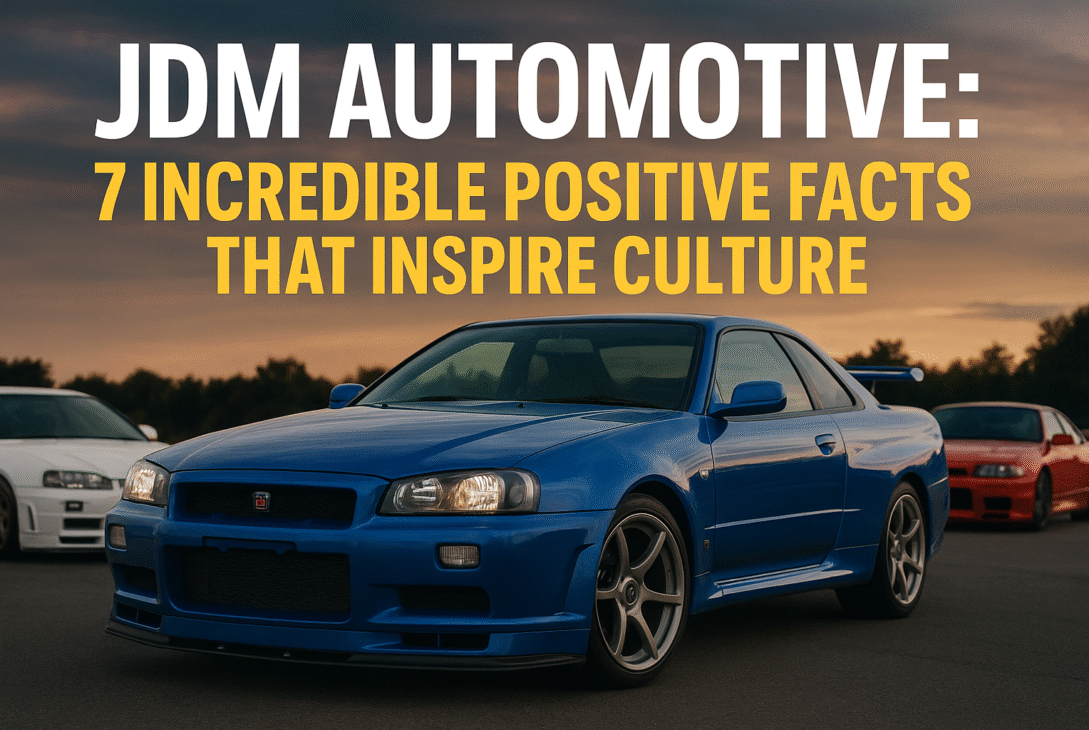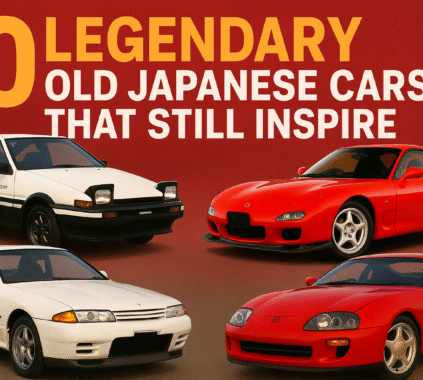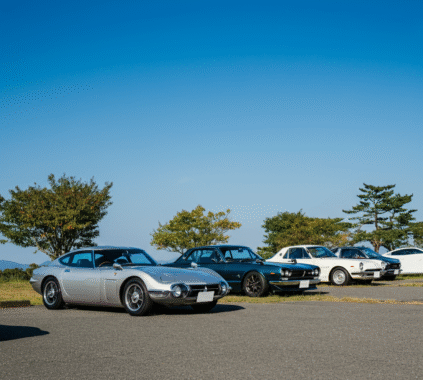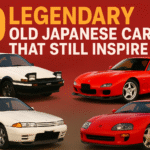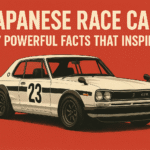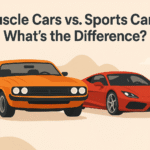
Introduction — why JDM Automotive still matters
If you’ve ever felt the electric buzz walking past a row of classic Skylines, S-chassis Hondas, and tucked-away kei cars at a meet, you already know JDM Automotive culture carries a gravity all its own.
Much more than badges and right-hand drive conversions, it is a convergence of engineering, aesthetics, motorsport genes, and a fraternity that makes parts, paint, and passion a rite. In this long-form guide, I’ll unpack seven incredible facts about JDM Automotive culture, explain what makes each facet so meaningful, and offer real-world anecdotes and practical takeaways for enthusiasts, restorers, and newcomers alike.
________________________________________
Fact 1: JDM translates to Japanese domestic market, but it has become a lifestyle shorthand.
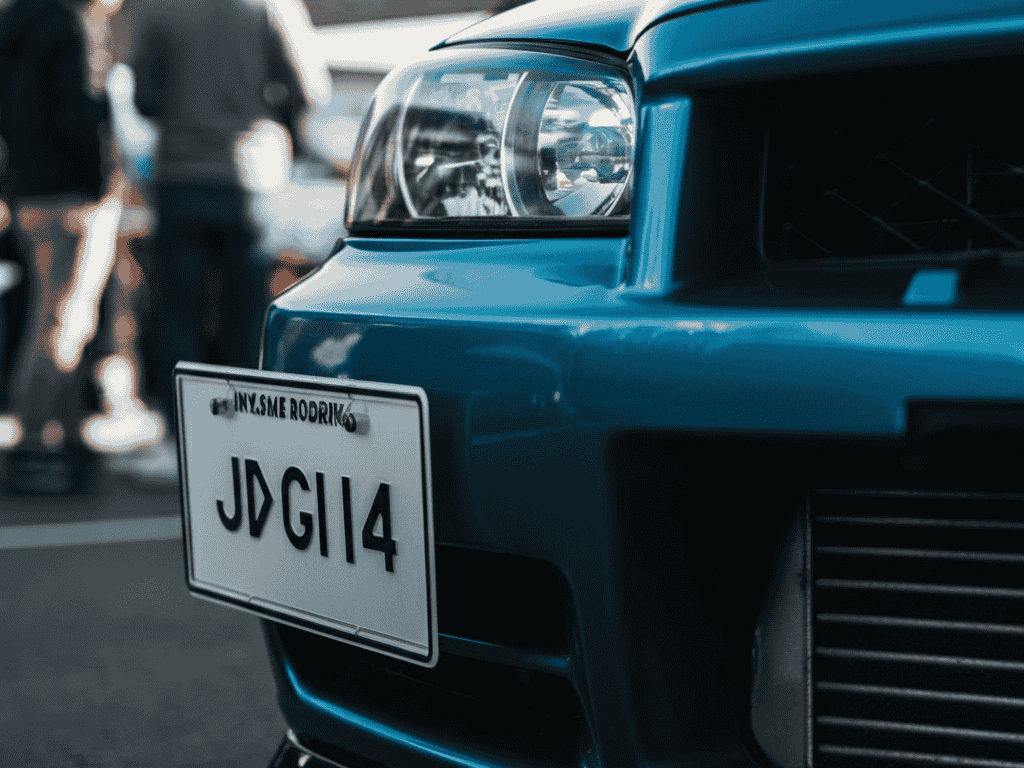
JDM can be translated to mean Japanese Domestic Market: cars, parts, and specifications that are built initially to be sold in Japan.
That narrow marketplace definition assisted in rationalizing variation in equipment or power production or even steering direction. However, the term began to expand as cars and components made ocean journeys legal and illegal.
Today, the acronym JDM is commonly associated not merely with a place of origin but a sense of style and philosophy: quality and astuteness to reliability, small package performance, and a particular aesthetic.
This semantic drift is why you’ll hear the words JDM Automotive used to describe cars that were never strictly Japan-only, yet capture that spirit.
Why it matters: In writing a copy, listing parts or appraising a car, specifying a genuine JDM import has its provenance, but when talking about culture, JDM is a banner that waves to mindsets and values.
________________________________________
Fact 2-The engineering origins of the JDM were hardened in the post-war boom and domestic rivalry in the 1970s
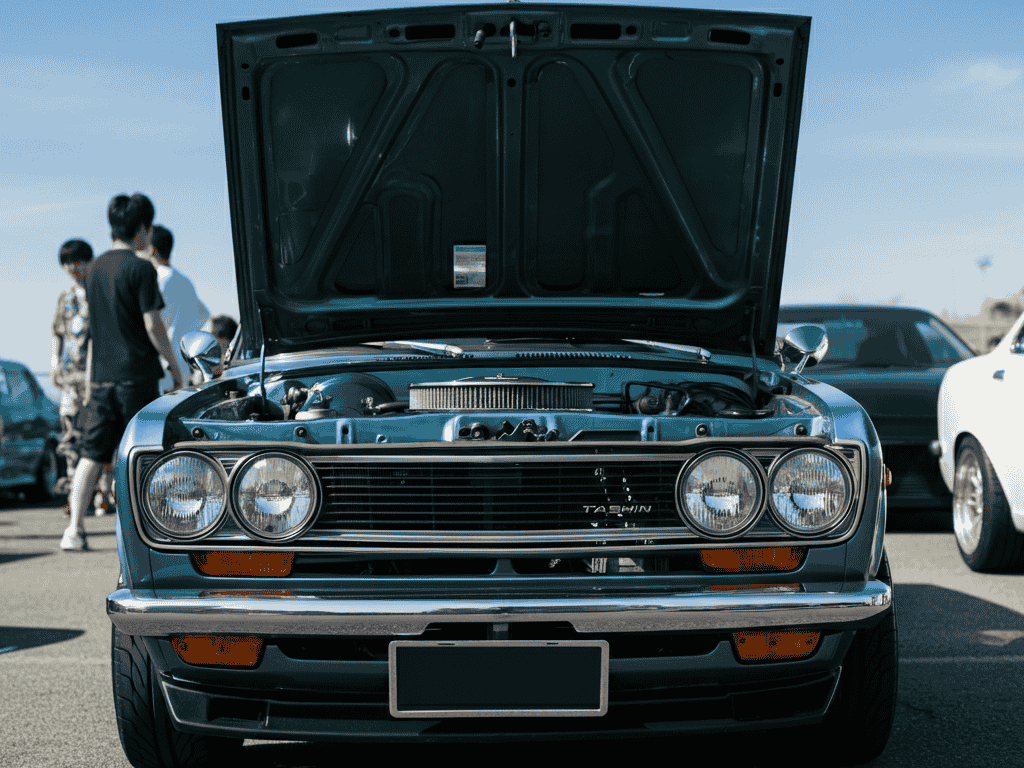
The post-war Japanese industrial boom gave rise to small, durable vehicles that would dominate most of the global competitors in terms of effectiveness and ingenuity.
By the 1960s and 70s, competitiveness among the domestic manufacturers drove them to rush to keep up: compact high-efficiency engines, lightweight chassis, and an emphasis on usable performance.
The resultant cars were pure raw material to enthusiasts: light, diverse, and sturdy. Those technical roots are a significant reason JDM Automotive culture prizes meticulous mechanical care and subtle, smart modification rather than flamboyant showmanship.
Anecdote: I recall a friend in Tokyo kept a wee Datsun 510 going all his years there, not because it was hip, but because the diminutive L-series engine was forgiving and entertaining. That utility was the garden where tuning took root: cheap and stable platforms that reward creativity.
________________________________________
Fact 3 – JDM appearance was exported around the world through the tuner boom of the 1990s
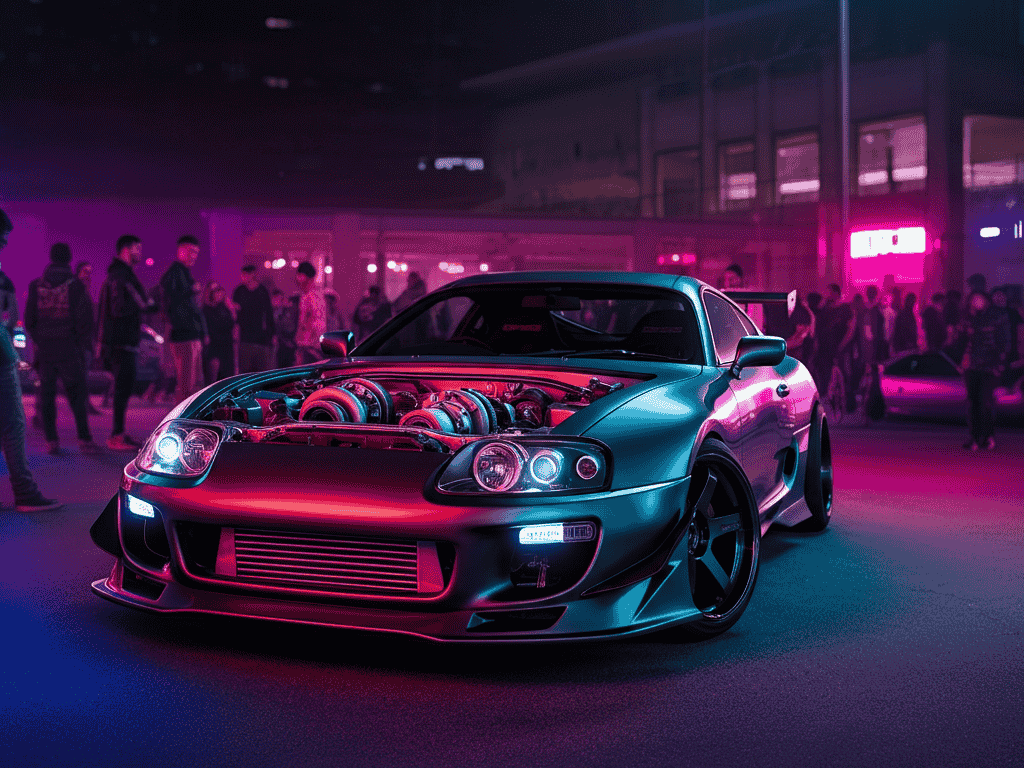
If you want to pick a decade when JDM Automotive culture exploded outside Japan, look at the 1990s.
A combination of elements, including cheap exports, magazines including Option and later Super Street, domestic tuning parts companies, and media including Fast & Furious, transplanted the sights and sensations of Japanese tuning to the West Coast of America and then onto the entire world.
Car enthusiasts attempted to duplicate Japanese source code with domestic components, traded engines, and developed a practical and stylish design. This period made such upgrades as turbocharging, coilovers, and bolt-on aero part of a worldwide lexicon of modified performance.
What makes it so good: the 1990s turned out to be a two-way street, with Japan exporting some of its influence to the rest of the world, and foreign demand coming back to support Japanese manufacturers in creating machines that were more accepting of enthusiasts’ needs.
________________________________________
Fact 4 — Drifting and grassroots motorsport are intrinsic to JDM Automotive identity
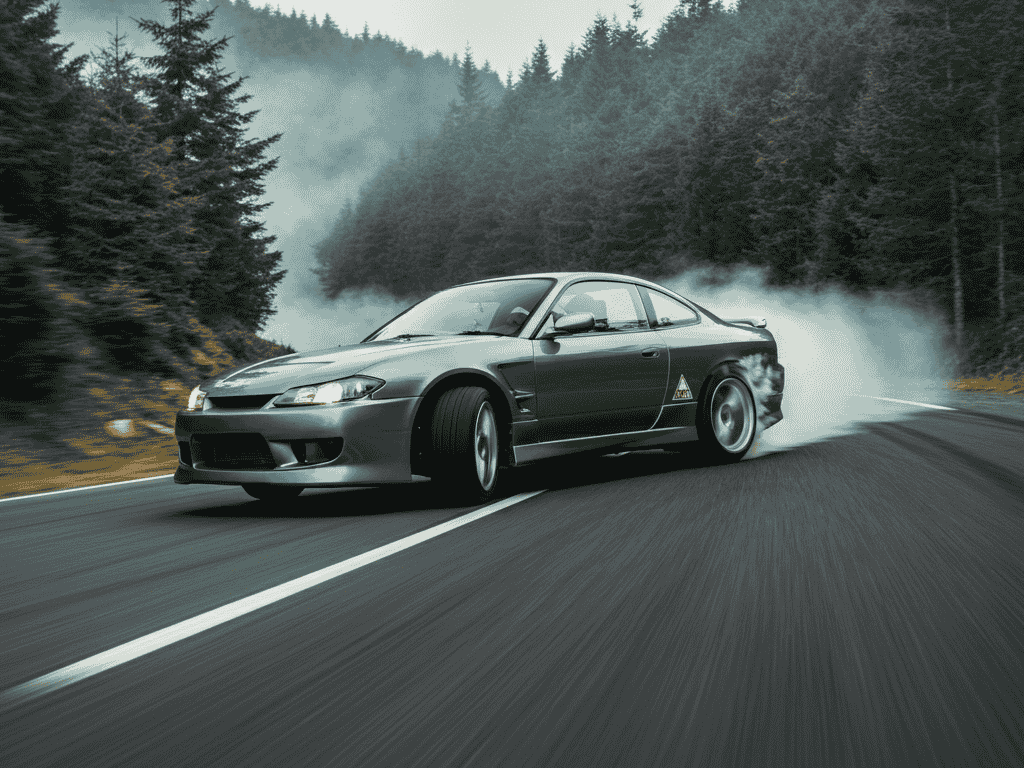
More than any single motorsport, eDrifting embodies the JDM Automotive spirit: skill, spectacle, and a creative reinterpretation of driving dynamics.
The aesthetics of sideways cars, tire smoke, and fractional control are now synonymous with JDM imagery and have directly affected tuning intent: suspension geometry, steering angle adjustments, and torque delivery can all be traced back to this motorsports heritage.
Tips and tricks: In the so-called JDM-inspired cars being built to compete on the track, stiffness, balance of braking, and suspension tuning come before going for the highest power output.
________________________________________
Fact 5 — JDM Automotive culture values authenticity, provenance, and “barn find” stories
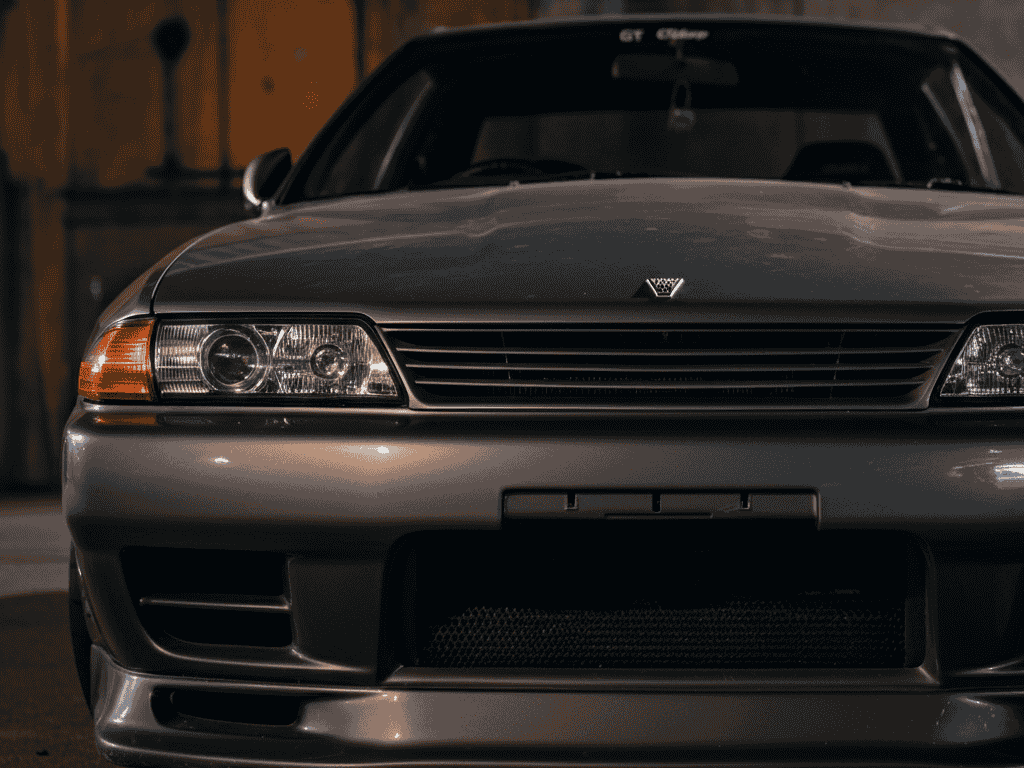
Original collectors and enthusiasts frequently value it: a well-documented original may be respected and fetch high prices.
What JDM imports can include oddball equipment or factory options that are unavailable in other vehicles – special trim, limited editions, or custom engine tuning.
This develops a strong secondary market of collectors and an appreciation of provenance.
Think of those internet forums where geeks have a fiddle over factory labels, maintenance records, and eBay provenance? It isn’t snobbery? Is it an appreciation of a car’s path? In more recent years, collectors are purchasing more untouched pieces, and the rise of the trend of gaming, social media, and the rekindling efforts of younger fans are causing the prices of particular models to skyrocket.
Anecdote: A friend was talked into paying a premium price on a nearly-original R32 Skyline because the prior owner had kept all of his receipts and the original dealer tag. Small things speak louder than the sound of money.
________________________________________
Fact 6 — The aftermarket ecosystem (brands, tuning houses, and parts) made JDM Automotive a sustainable culture
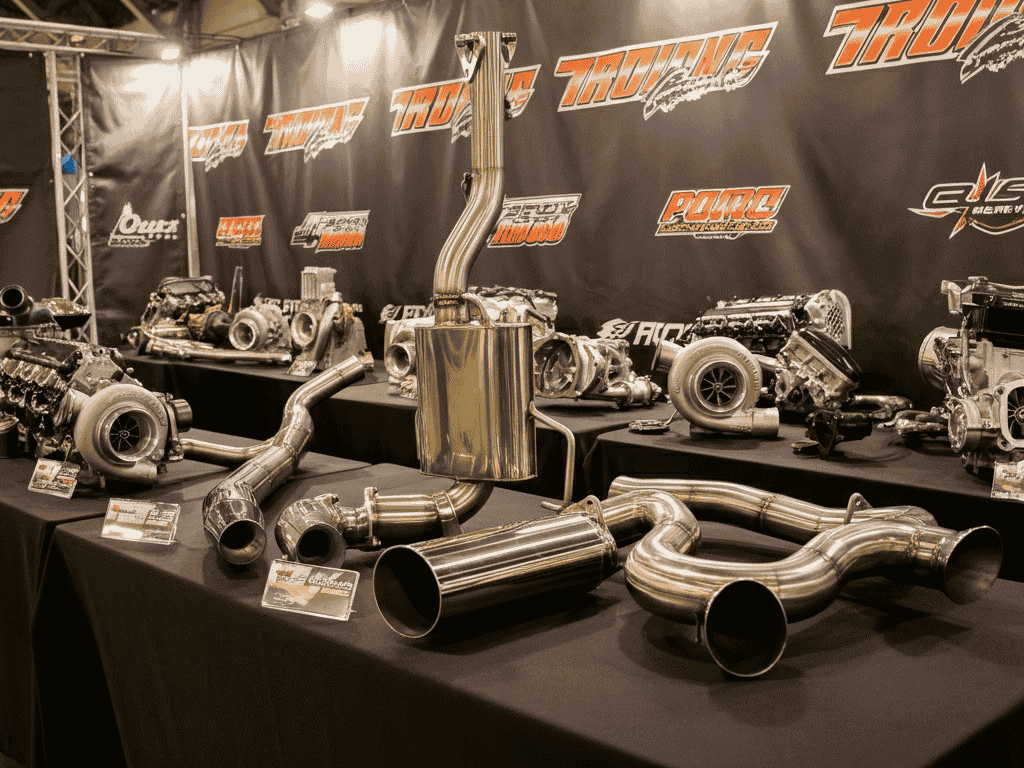
Japanese aftermarket suppliers such as HKS and Tomei, GReddy and Nismo, had established a name in quality engineering.
The companies not only sell parts but have also developed philosophies on how performance should occur; more has to be lightweight, reliable, and track-tested.
Such an established aftermarket existed, which is why most JDM cars could be tuned without compromising reliability.
Pro tip: when sourcing parts for a JDM Automotive project, prioritize well-documented OEM replacements and reputable tuners — the proper suspension kit or ECU mapping can transform the driveability more than chasing arbitrary peak horsepower numbers.
________________________________________
Fact 7 — JDM Automotive culture is evolving: social platforms, Gen-Z interest, and preservation

The culture that began in print and grassroots is now alive and thriving on YouTube, Instagram, and TikTok platforms, and has consequently introduced a new generation to the culture.
Respectively, the younger fans experience classic JDM vehicles via video games, live streaming, short-form videos, and revel in restoration and show builds.
The resulting list draws both benefits – increased interest in retention, supply of parts, and society, and strains: the hype may drive price increases and, in some cases, tempt cosmetic modifications at the expense of restorations that work.
Nevertheless, this has resulted in a vibrant, adapted culture: restorers, fabricators, and small businesses are here to stay since demand continues to change.
The latest review indicates that the young generation is specifically opening up to vintage cars and JDM models.
What to look out for: Over the decade, we have looked forward to even more OEM-style restorations, re-imagined classics, and boutique services aimed at the descending customization-oriented buyers who demand genuine authenticity.
________________________________________
Deep dive — How JDM Automotive informs build philosophy
When creating a JDM-type car, think in layers:
1. Core-first: brakes, tires, suspension geometry — handling and balance have always been fundamental to the JDM approach.
2. Engine and driveability: tuning the torque curve, or not just maximum horsepower. Most vintage JDM engines have been most receptive to intelligent mapping and bolt-on breathing modifications.
3. Describing and origin: retain receipts, OEM badges, and photo images. Future buyers and other enthusiasts covet documented builds.
4. Intelligent aesthetics: aero, wheels, and stance are all important – but add in practical elements: brake cooling ducts, adjustable levels of downforce, and correct tire widths.
This layered approach resonates with the spirit of a Japanese tuning culture that favoured engineered mods instead of mere cosmetic swaps. This yields a car that behaves on the road or track and still refuses to look like it’s just a functional machine.
Myths, Defuted Common Myths:
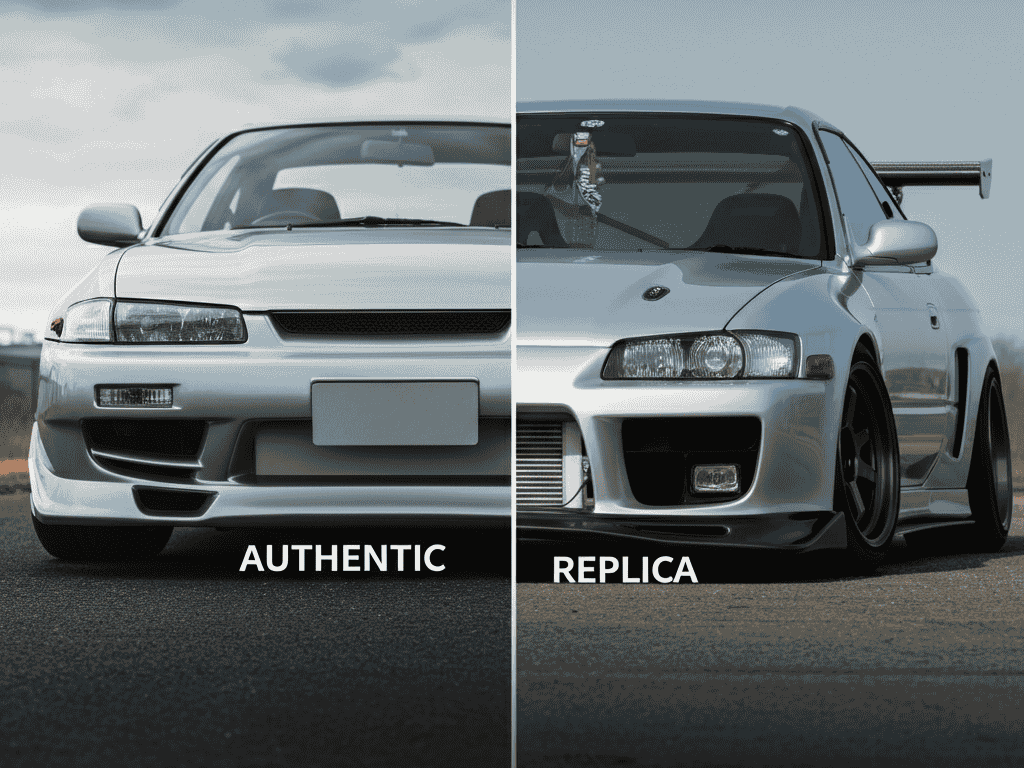
Myth: JDM parts are unquestionably superior to aftermarket all the time.
Fact: OEM JDM parts can be perfect, yet nowadays, the newer brands of aftermarket parts are usually equal or better in performance-oriented parts. Testing and research count. MotorTrend
Myth: A JDM car cannot be left-hand driven and is genuine.
Reality: Right-hand drive is an element included in the JDM package. However, many cars produced in Japan and sold internationally to an LHD market remain at the heart of the culture. Provenance and build options make something authentic, not the side of the steering wheel. J.D. Power
Myth: Skylines and Supras are all that JDM fame is.
Reality: While icons like the Skyline and Supra are cultural anchors, JDM Automotive culture celebrates everything from kei cars to sedans and vans — oftentimes the most interesting builds use unexpected, affordable platforms.
Two secondary sources that can be used as primary sources (and why I selected them)
1. MotorTrend -What Does JDM Stand For? — A great beginner on the strict market origin of the term, and the current usage adopted by the fans. It is commanding and easy for readers who need a proper definition. MotorTrend
2. Hagerty – feature and living-with articles about the JDM imports- Hagerty, with its historical retrospective and practical ownership advice, offers a window into the culture and the reality of living with JDM imports. There is a gap in their data that fills in between collector analytics and lifestyle reporting. Hagerty+1
You may include these in your article to provide the user with an authoritative background and strengthen the chances of making rankings.
FAQ’S
Q: What is JDM Automotive culture?
A: It’s the culture, fashion, and way of doing things around Japanese Domestic Market vehicles and parts, the tuning and motorsport scene, and collector enthusiast culture. MotorTrend
Q: Are JDM cars superior to other imports?
A: Better = depending on goals. The JDM vehicles are renowned for their engineering, tunability, and special options, but similarly fantastic performance is accessible in other parts. Align the platform with goals. J.D. Power
Q: What should I do to get my JDM first build?
A: Start with a good maintenance baseline (brakes, tires, suspension), keep records of their actions, and buy parts from well-established suppliers. Attend local popular meetings and Internet forums to get to know some expert builders. Hagerty
Closure- the culture machine continues to run
JDM Automotive culture has always been more than an acronym. It is a stratified culture of Engineering prowess, practical customisation, racing heritage, and engaged audiences that embrace the ordinary and the extraordinary. Auto meets, faithful restoration, or hunting an original import, the JDM culture can help to guide you toward sensitive builds and conscious car care.

